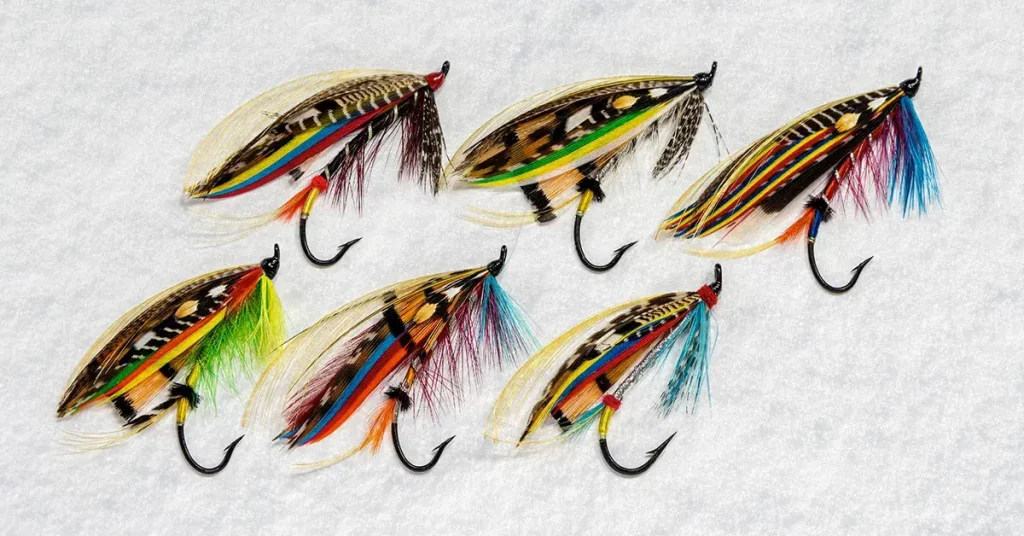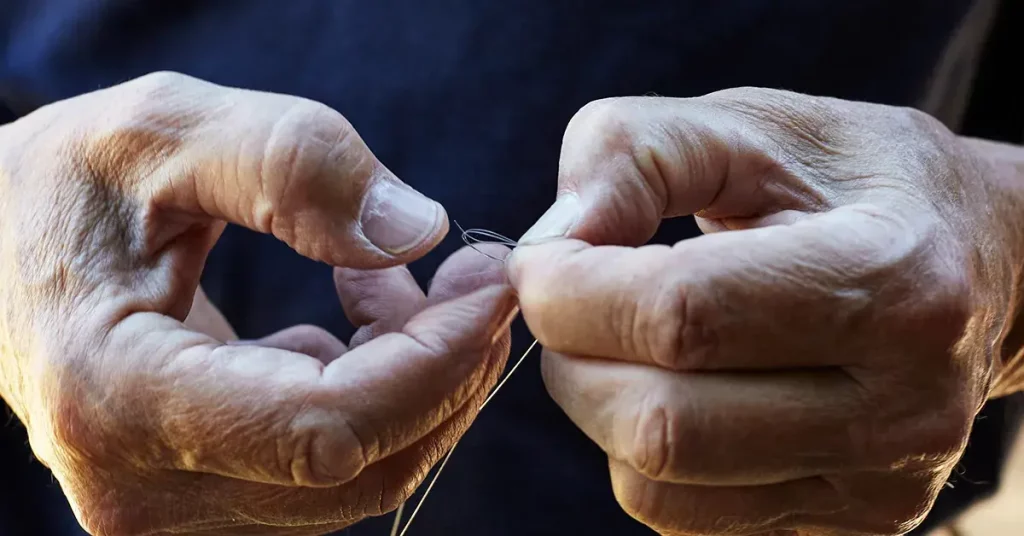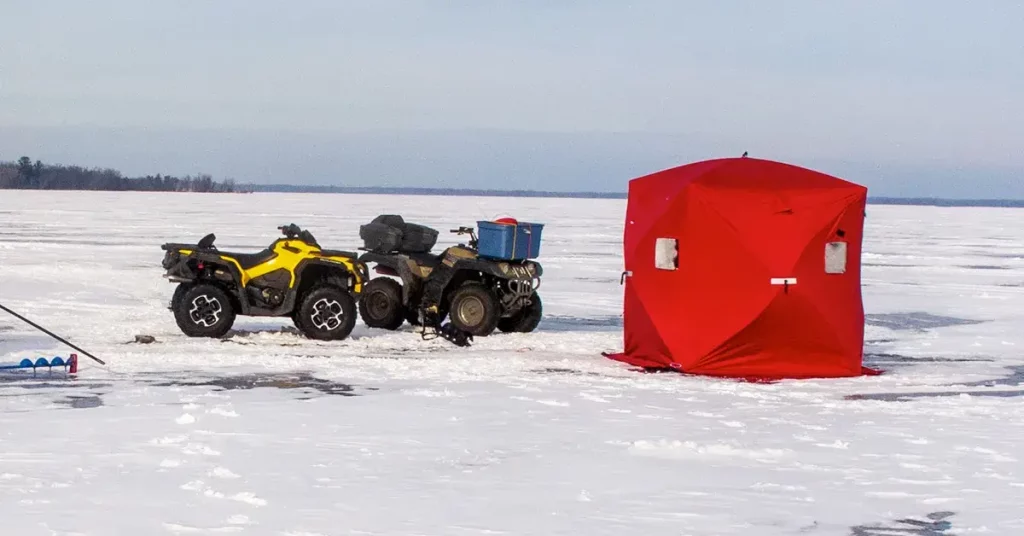When I first started ice fishing, I was discouraged by how few fish I caught. After reading more about ice fishing, I found I was using the wrong bait! Ice fishing with flies increased my fishing skills and success by enticing the fish to bite out of curiosity.
During winter, when the water is colder, fish are lethargic and eat less. Using flies improves the enjoyment of the sport by providing a more consistent catch versus hits.
Materials Used in Fishing Flies
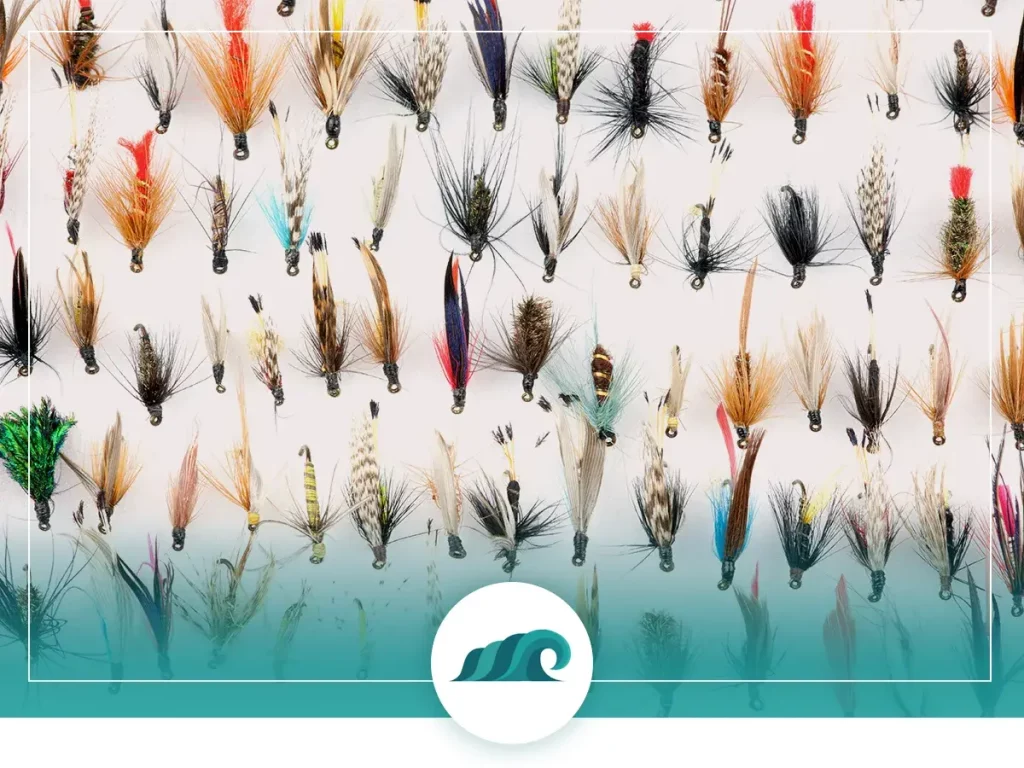
The oldest documented ice fishing fly is the Soft Hackle, found in British literature dating to 1496, proving that many generations used flies in ice fishing. Now, many people use them, like winter fishing expert Tony Roach. Typically, we hear more about fly fishing flies than we do for ice fishing flies. They are a fun way to catch more fish without the use of live bait.
Materials used in ice flies are diverse. A tungsten jig with chenille, fur, and feathers is standard ice fly, with thread and wire being the basics for most flies. Chewy worms have a texture of silicone pillars with added tungsten beads that appeal to trout. Many flies have added tungsten beads so they will drop faster toward the bottom of the lake.
Tungsten jig flies move up and down, mimicking the pattern of movement of the fish’s natural food source. They are in a shell pattern and come in multiple colors like orange, grey, and green, although orange seems more popular with trout. A size ten or twelve is the most effective for getting hits.
Nymph hooks are a base with a tungsten bead at the head for weight. First, wind a wire around the hook for weight for a heavy jig. Next, wind a yellow thread around five or six times, and finally, add a tail of green or orange feather or fur.
Ice Fishing Fly Patterns
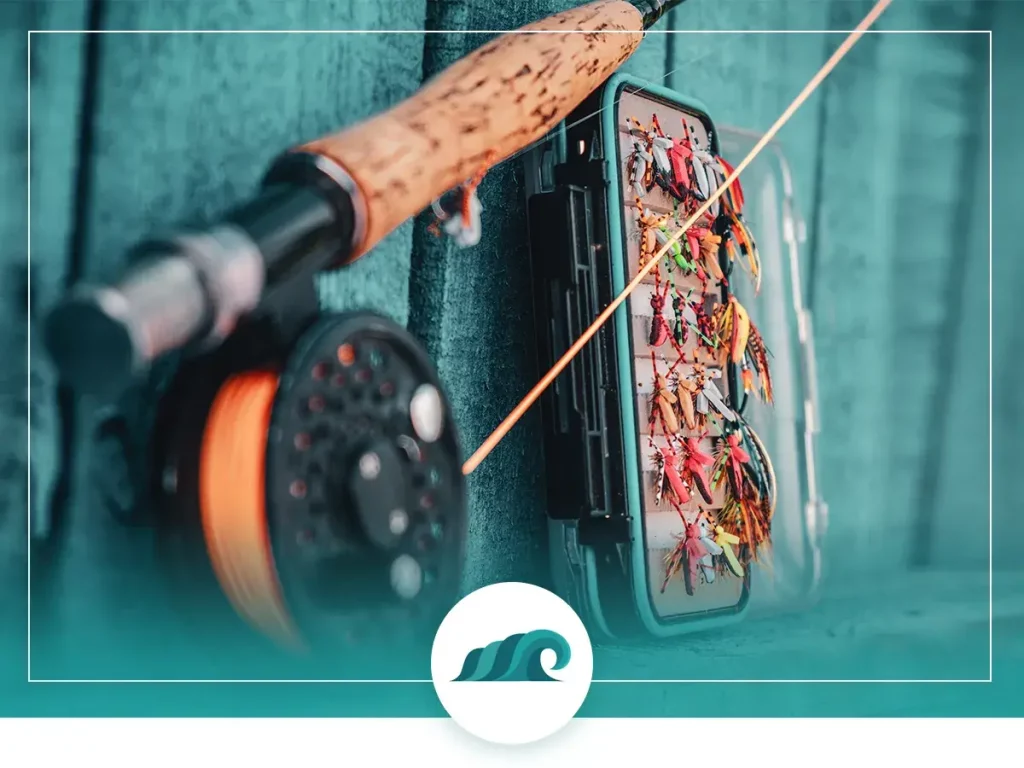
Use or choose a pattern for a fly based on the target species of fish you are hunting. The pattern design includes textures and colors that reproduce the movement of the fish’s food sources in the water. Popular ice fishing flies for trout, perch, salmon, and bass include:
- TJ Hooker Tan/Brown
- PT Hot Bead
- Tailwater Slow Big Jig
- UV Yum Yum Jig
- PT Jig
- CBD Nymph
- Tungsten Jig Assasin
- Fire Starter
- Tactical Copper John
- Wayno’s Cotton Candy
Each fly has its distinctive color, texture, and movement through the water. The patterns produced closely resemble the food sources for the fish, with added streamers made from everything from turkey feathers to coyote hair. Colorful fly streamers work by increasing movement for perch deep in the water and crappie, bluegills and trout higher up.
Common Flies for Ice Fishing
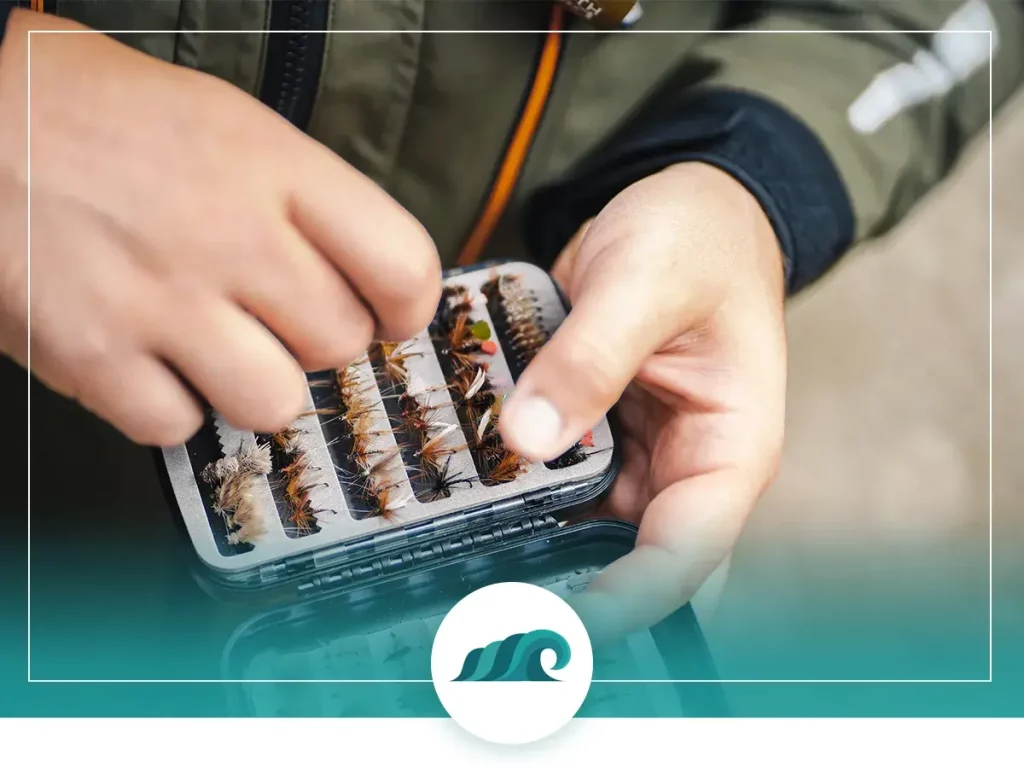
Midge Flies
Walleye and whitefish favor chironomid (midge) type tied flies with red wire and a peacock herl at the head. Chironomids are active under the ice all winter long, so they appeal to all kinds of fish. Tie a midge fly with a primarily red or dark green body with white or orange tufts of feather or hair at the head and bottom.
Scud Flies
Scud flies closely resemble crustaceans which hold to the vegetation where fish feed. Tied scud flies range in length from ¼ to 1 inch and can be any bright color. For example, tungsten scud flies are tied in the same pattern, but the color is olive grey/silver and gold/orange and is a favorite of trout.
Bunny Leech Flies
Leeches are a staple in the diet of bass, salmon, trout, and steelhead. The Bunny Leech fly is irresistible if it is also tied with bunny fur to increase its movement and appeal in the water. Leech patterns can be dead-drifted, stripped, or jigged.
Chewy Worm Chenille Flies
Chewy worm chenille flies are soft and rubbery with wiggly movement in the water. Large trout are a fan of chewy worm flies. When choosing this fly in the cold of winter, remember the fish have smaller appetites, so choose smaller worms so you will also attract panfish.
Blob Flies
Blob flies are blobs of fuzzy material in neon orange, pink, and yellow that represent Daphnia to fish. Blob flies represent groups of Daphnia. Daphnias are common water fleas and a staple of most fish’s diets.
Many flies use jig hooks as a base material with a wire added for weight. Next, a worm may be added in the case of a chewy worm fly and finally wrapped with red or orange thread with a tuft of feather or hair at the head and tail.
Ice Fishing Fly Sizes
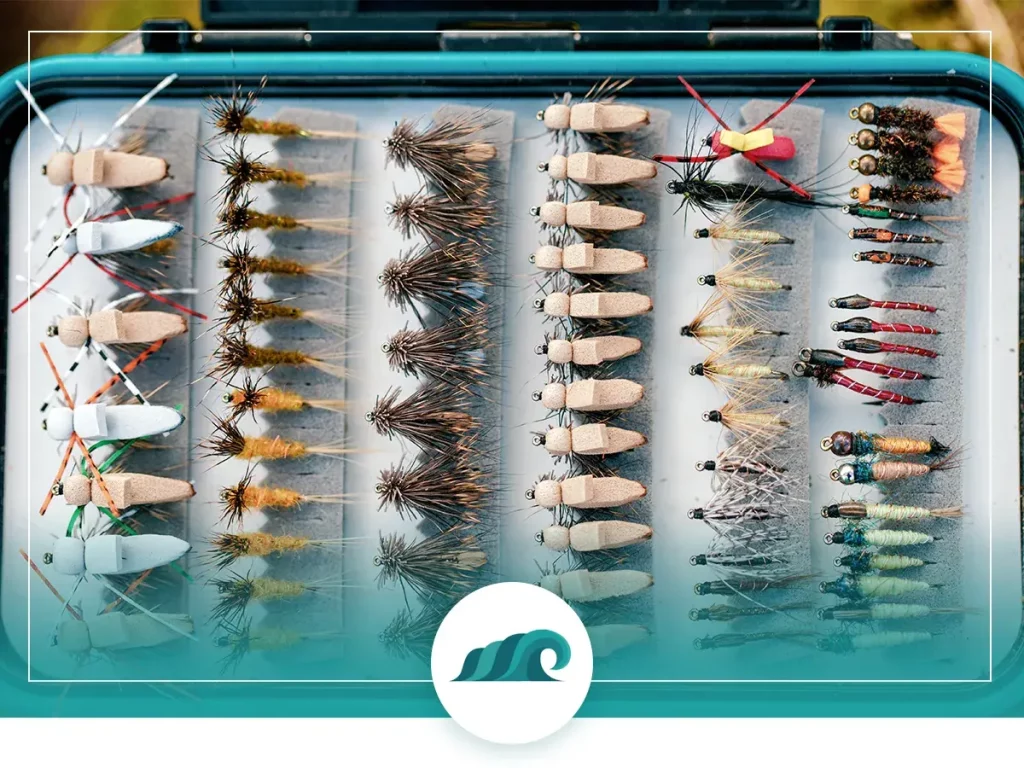
The type of fish determines the size of the flies. Smaller fish require a smaller fly and larger fish require larger flies. Ice fishing occurs in colder weather, so fish have a slower metabolism, meaning they are not aggressive with food. A larger fly will scare the fish away, so you want to choose a smaller fly.
The size should be no smaller than an eight and no larger than a fourteen.
Ice Fishing With Flies
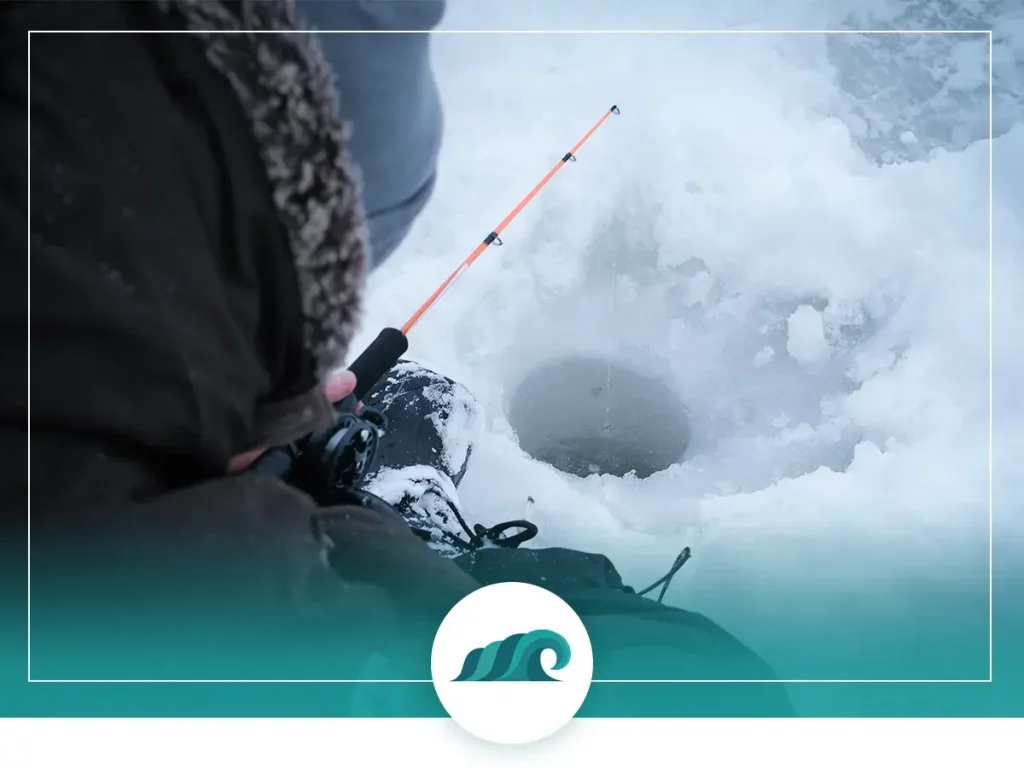
Some traditional fishermen criticize ice fishing with flies because they have never tried it. However, there are two main advantages to fishing with flies versus live bait.
First, flies do not have to be kept alive like bait, and some in-land lakes do not allow live bait. However, if you are considering ice fishing with flies, fishermen who have tried have successfully increased their catch.
Many angler supply stores provide a variety of flies if you do not want to tie your own. However, most fishermen have found that small, local fishing supply stores produce the best flies as they are familiar with the local fish population and tie their flies accordingly.
Ice Fishing Fly Rules and Regulations
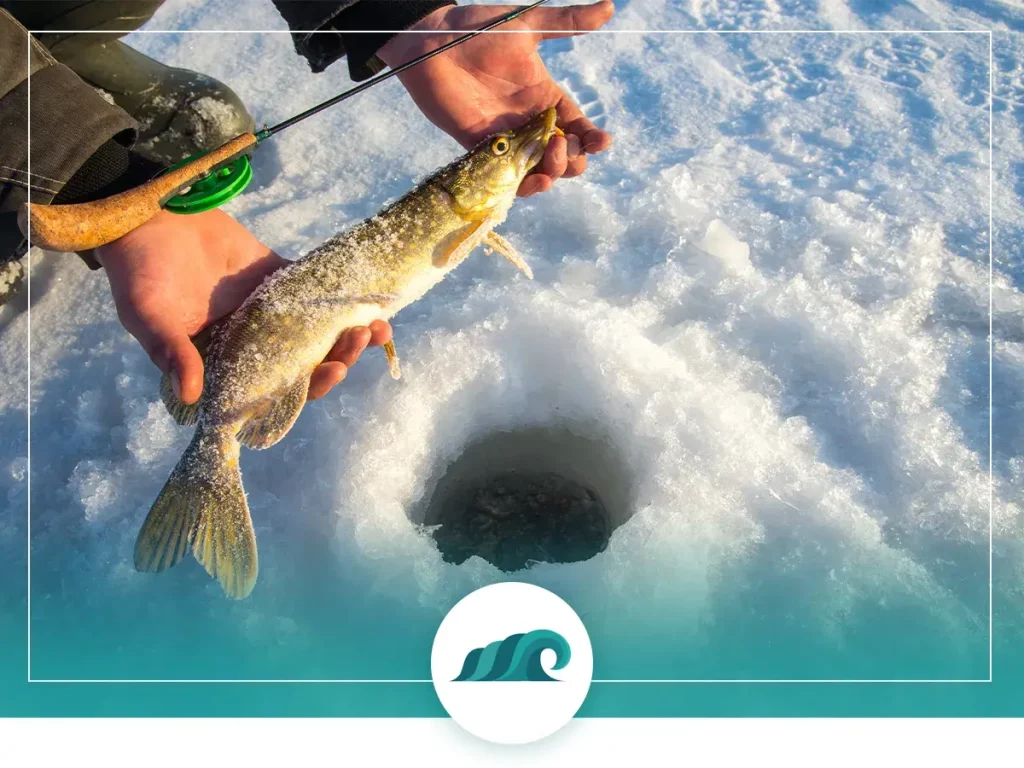
When deciding where to go ice fishing, checking the regulations on flies is mandatory. Each jurisdiction regulates what type of flies are allowed with rules specific to each location. A simple internet search of government websites will provide the needed information.
Summary
Ice fishing with flies makes your ice fishing trip more successful and enjoyable. You can further increase your chances of catching even the most finicky fish by choosing a fly for the type of fish you want to catch. Having several flies lets you catch various fish. Whether winter fishing on Swan River or further North, you won’t regret trying to ice fish with ice flies. You’ll have everything you need for a great time.

